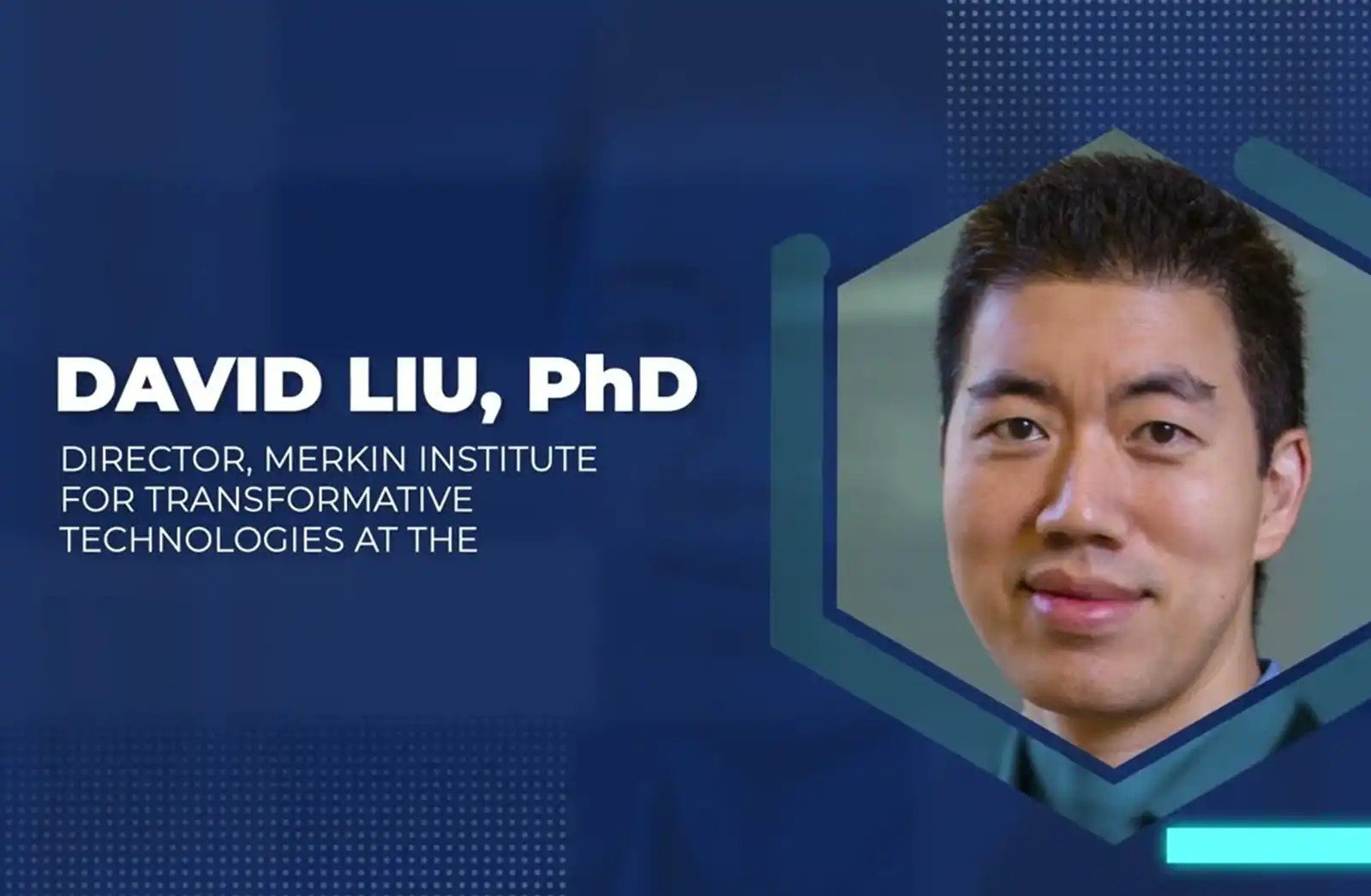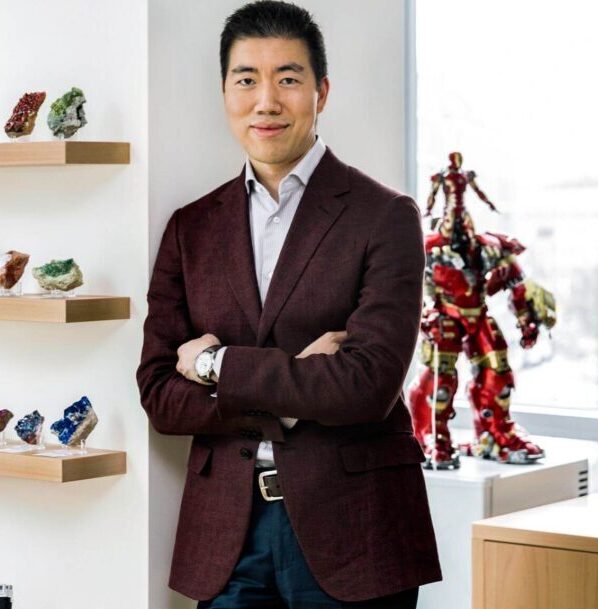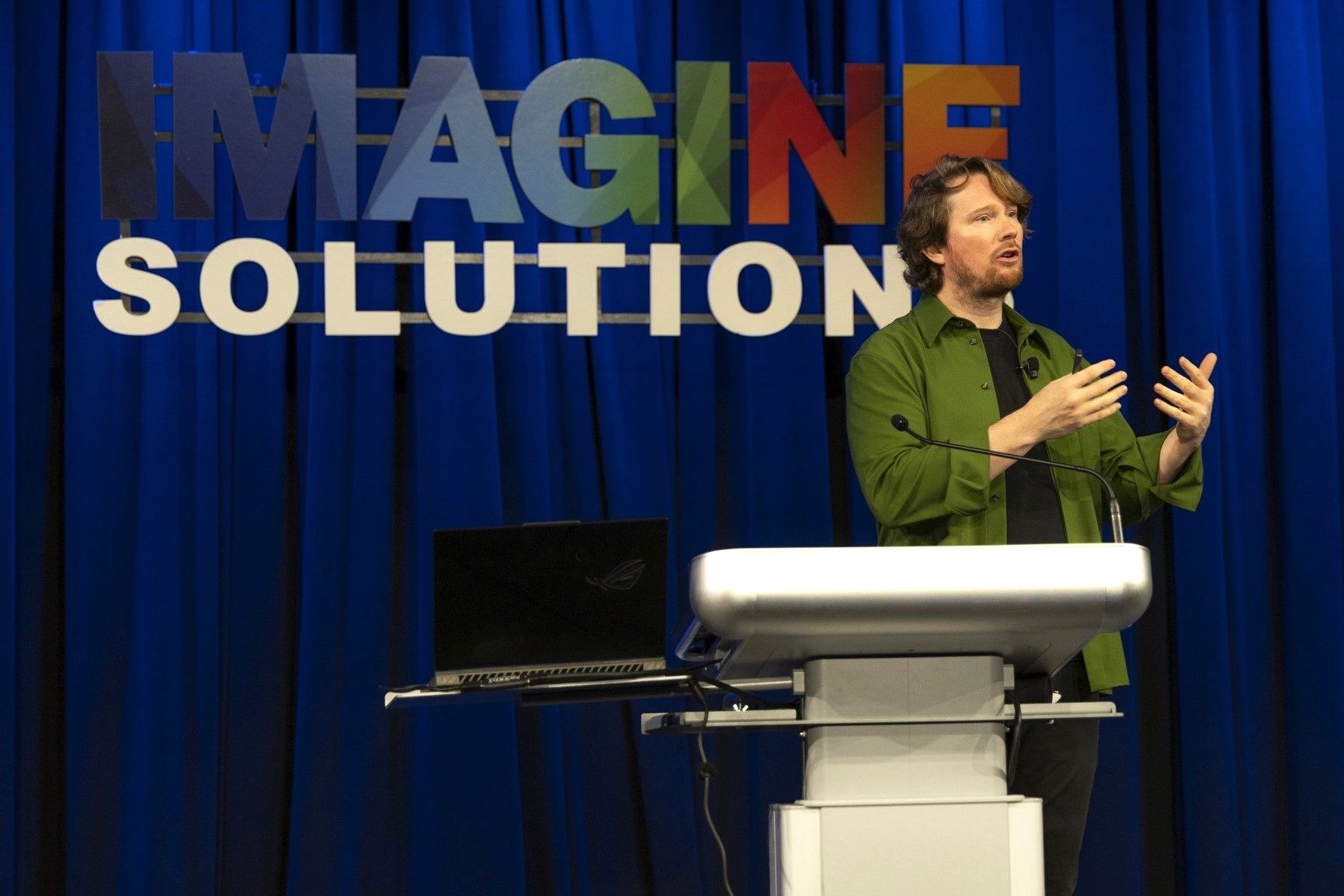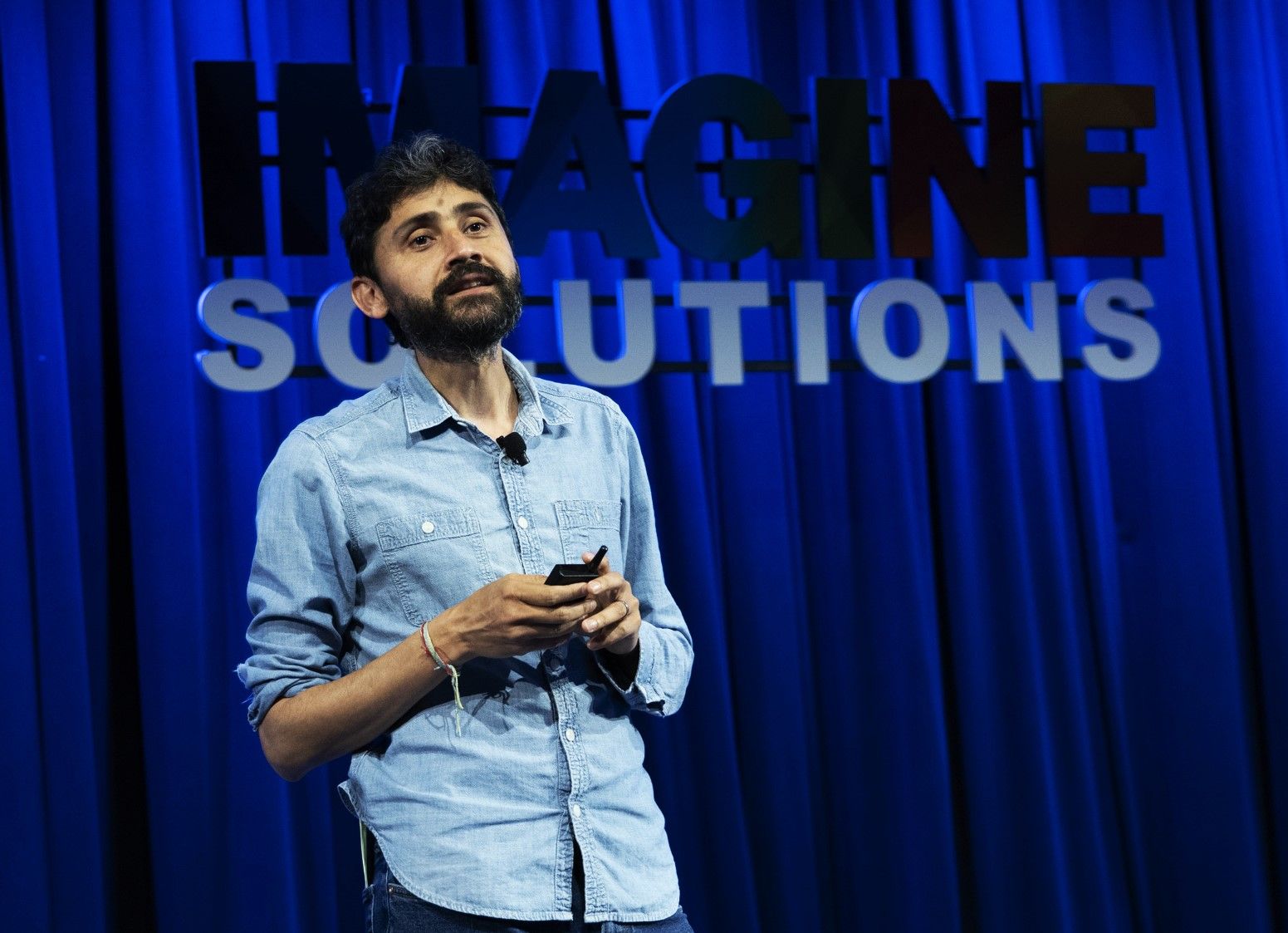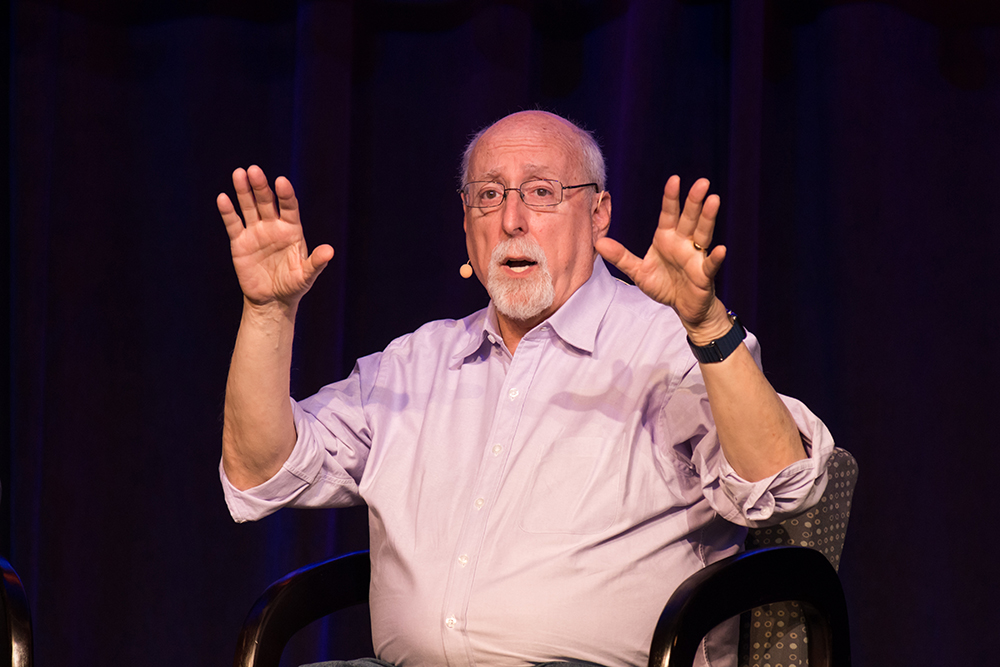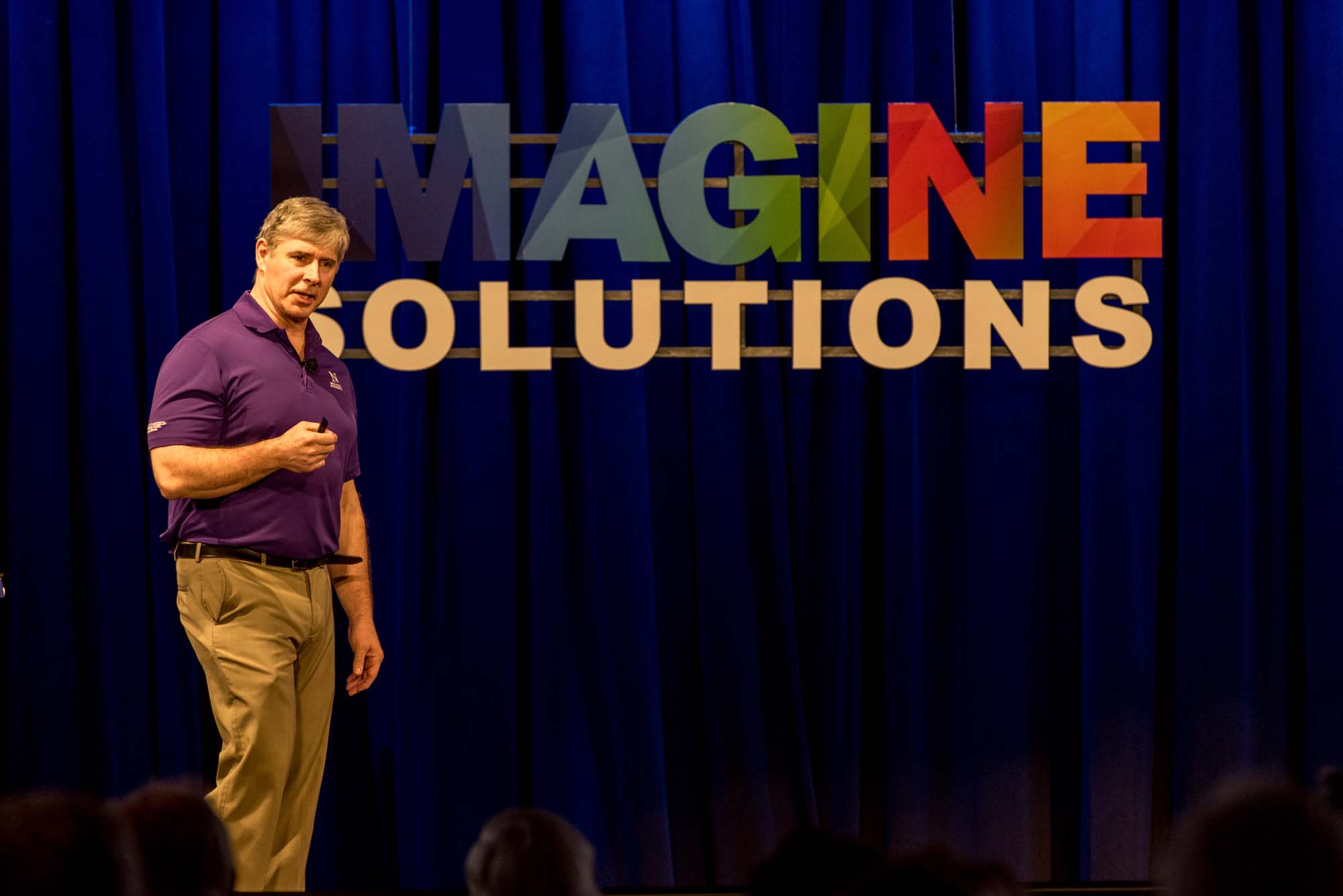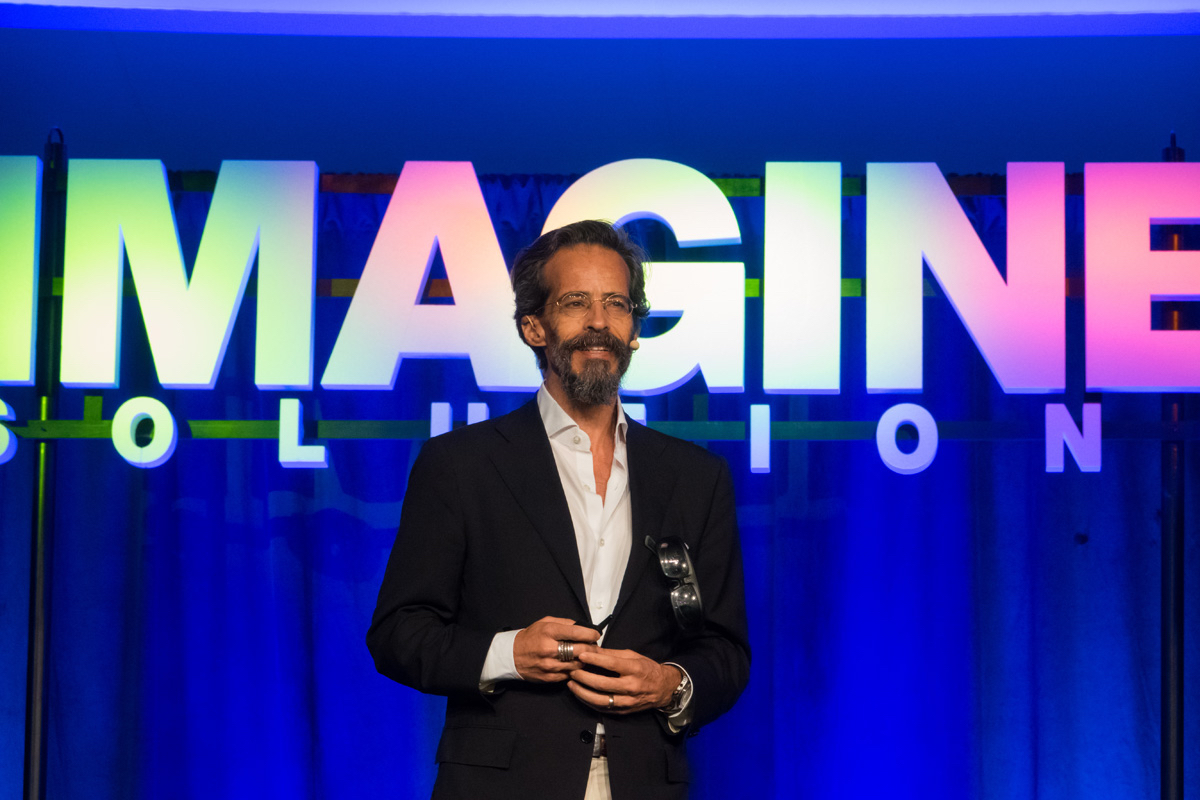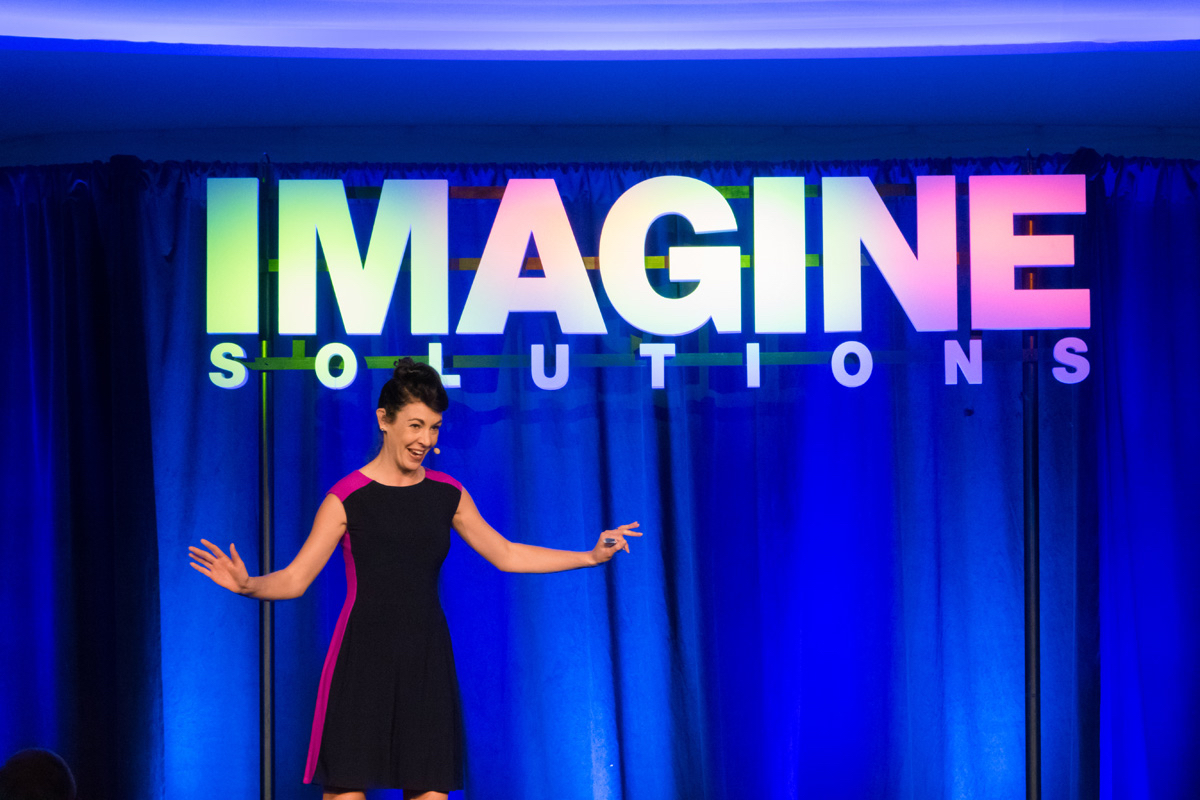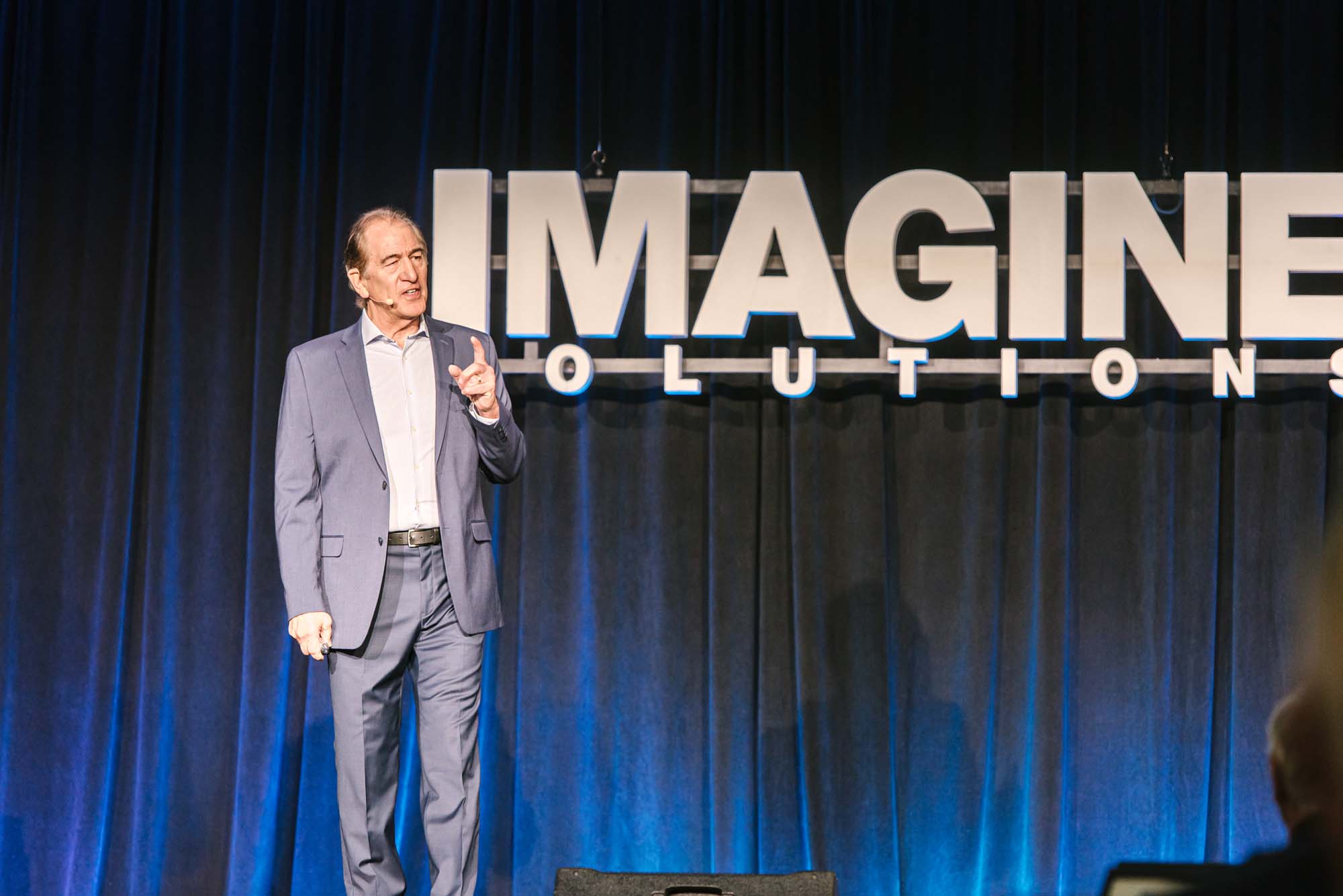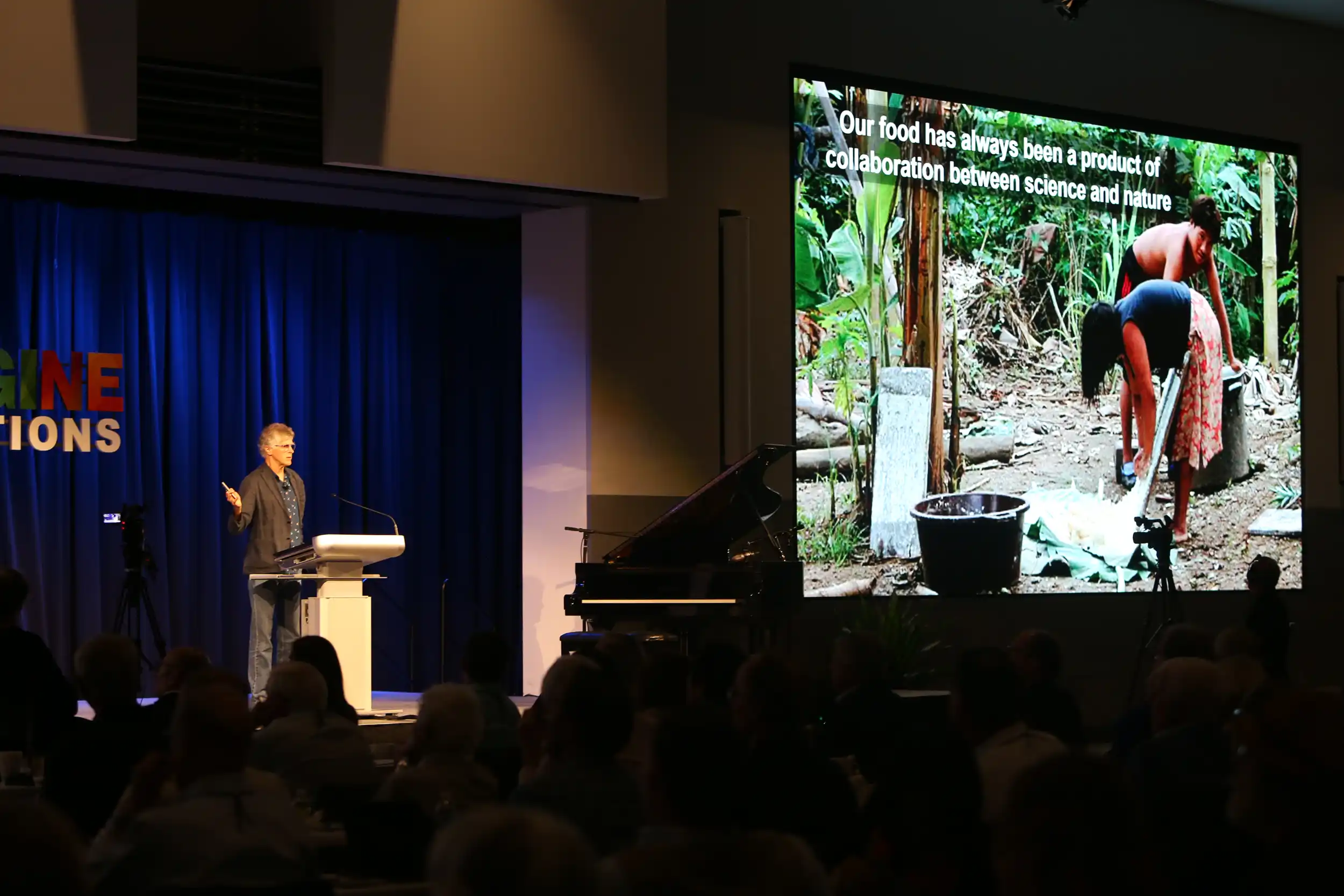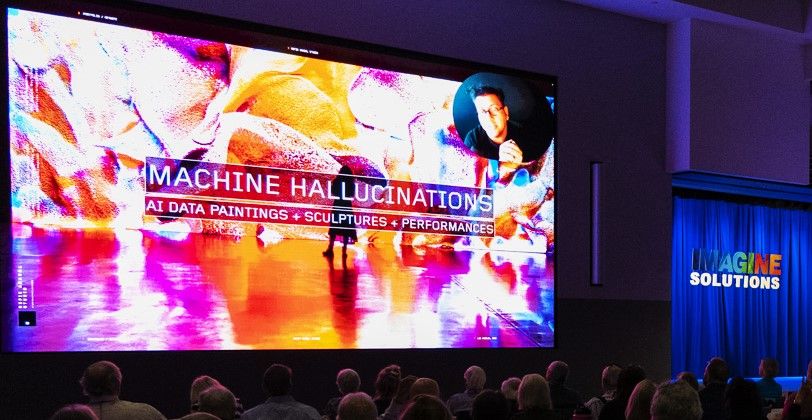The delivery of genome editing proteins to treat genetic diseases.
00.00
foreign [Music] every year about 10 million babies are born with genetic disorders caused by misspellings in their DNA the strains of billions of A's C's G's and T's that make up our genomes just about any type of DNA misspelling can cause a genetic disease swapping this C with a t results in the rapid aging disease progeria replacing this a with a t causes painful and deadly sickle cell disease the deletion of these three DNA letters is the most common cause of cystic
01.01
fibrosis and the insertion of extra DNA letters causes tay-sex disease and Huntington's disease these misspellings in our DNA collectively cause thousands of disorders that affect hundreds of millions of people and their families driven largely by this problem scientists have recently developed Gene editing technologies that can change these DNA misspellings to treat or maybe even cure genetic diseases one of these tools is this blue protein called crispr cas9 which is programmed by a small piece of RNA shown in green called the guide RNA once the protein finds a Target DNA sequence that matches the sequence in the guide RNA it cuts that DNA breaking the double helix into two pieces cutting DNA is a very effective way to disrupt a gene and bacteria evolved
02.00
crispr as a defense system to mess up the genes of infecting viruses disrupting genes by cutting them with crispr cas9 can also be very useful for our own applications this approach has already been used in several clinical trials for example to disrupt a gene that makes too much of a protein that causes a deadly disease called amyloidosis so the era of human gene editing isn't just coming it's already here foreign ly most genetic diseases can't be treated by disrupting a gene instead for most genetic disorders we need to precisely correct the misspelled gene into a healthy DNA sequence in order to best benefit patients even just six years ago the concept of fixing a specific misspelling in the
03.00
vast Genome of a live animal seems like fanciful science fiction yet today we can do exactly that because our laboratory building on the work of many other scientists recently developed base editors and Prime editors molecular machines that precisely correct the misspellings that cause genetic diseases by rearranging the atoms in DNA this adventure began in 2013 when I was brainstorming projects by email with Alexis comor a new postdoc in the lab I pitched an idea if you could directly convert one DNA letter into another at a specified position in the human genome efficiently and without uncontrolled byproducts I think you could transform genome engineering and possibly human Therapeutics it was an exciting idea in theory but
04.00
pulling it off would require going beyond the DNA cutting scissors of crispr cas9 we needed a machine that could search for and bind a DNA sequence of our choosing like cas9 but instead of cutting the target Gene the machine would need to directly correct a single letter misspelling but how can we convert one DNA letter or base into a different one fortunately nature provides enzymes like this one that can convert a c into a base that looks like T through a known chemical reaction however they do so indiscriminately to make this conversion occur at a Target C of our choosing Alexis attached one of these enzymes to a disabled crispr cast 9 protein that can still find the target sequence but can no longer cut DNA we were excited to see that in a test tube the resulting engineered protein
05.00
successfully converted a c of our choosing into a t but while this initial base editor worked well in a test tube when we tried it in living cells the converted base was quickly removed by the cell undoing our edit to solve this problem we use this purple protein taken from a different corner of nature that protects the converted base by attaching this small protein to the rest of our machine we developed a prototype base editor that for the first time could convert C to T or G to a at targeted sequences in the genomes of living cells but it only worked some of the time because changing a c to a t creates a disagreement within the DNA double helix that confuses the cell since C only pairs with G and T only pairs with a simply converting a c to a t results in
06.01
this TG mismatch if the cell resolves this disagreement by replacing the T with a c then we end up with our original sequence and once again we've lost our edit one morning Alexis came to me with a solution to this problem she realized that we could trick the cell into resolving the mismatch in favor of our edit by making a small change in the machine so it Nix the unedited DNA strand containing the G this Nick causes the cell to replace the G on the unedited strand with an a as it remakes The nift Strand thereby completing the permanent conversion of a CG base pair into a stable ta-base pair next we begin working on a second class of Base editor one that could convert a into G or t into C this time however there was no enzyme we
07.02
could borrow from nature that was known to perform the necessary chemical reaction so Nicole goodelli another member of the lab bravely agreed to try to evolve our own enzyme to perform the needed chemistry despite taking on one of the most ambitious projects in the lab at the time Nicole succeeded in evolving this red protein and her efforts resulted in this second class of Base editor that converts a to G and T to C at targeted basis of our choosing these two types of Base editors developed by Alexis and Nicole in principle can fix the most common kinds of disease-causing misspellings in our DNA representing about 30 percent of the total and in the six years since we first reported base editing thousands of Laboratories around the world have used base editors to make precise
08.00
single-letter DNA changes in organisms ranging from bacteria to crops to people base editors have recently been used in animals to correct single letter misspellings that cause devastating genetic diseases for example base editors now provide a way to fix that c to T misspelling that causes progeria mice with this misspelled Gene suffer rapid aging and early death like human Progeria patients here's an untreated Progeria Mouse at seven months old you can see that the misspelling causes a thinned and whitened coat pronounced curvature of the spine and a very low activity level by this age these Progeria mice pass away around this time far earlier than the two-year lifespan of a normal Mouse now I'm about to show you three Progeria mice that each received a single injection of Nicole's base editor
09.02
programmed to correct the team misspelling that causes Progeria back into the normal sea even though these mice are 11 months old far older than any untreated Progeria mice can live they show few apparent symptoms of the disease in fact Progeria mice given a one-time injection of this base editor live about two and a half times as long as untreated mice reaching what would be considered the start of old age in normal mice we're currently working with many other scientists and doctors to advance this treatment towards a clinical trial that might offer Progeria children for the first time a way to correct the root cause of their disease many other genetic diseases in animals have also been treated with a one-time dose of a base editor for example by base editing bone marrow to fix the misspelling that causes sickle cell disease
10.01
we restored normal blood parameters and rescued the disease in mice base editors have also been used in animals to treat other diseases including high cholesterol muscular dystrophy ALS fennel ketoneuria tyrosinemia Neiman pick disease and genetic blindnesses so base editors are powerful molecular machines that can correct four of the most common types of misspellings in our DNA but what about the remaining 70 percent of known disease-associated misspellings which include the eight other types of single letter swaps as well as missing letters and extra letters we originally thought that it would take scientists many years to develop all the molecular machines needed to address the rest of this pie chart but in 2018 Andrew anzolone then a new postdoc in the lab proposed a bold idea that had the potential to correct almost
11.01
any type of DNA misspelling in living cells he envisioned a molecular machine that could directly rewrite DNA misspellings with a strain of corrected letters in a manner similar to a search and replace function so if crispr cast 9 is like scissors and base editors are like pencils Andrew was proposing to develop a DNA word processor Andrew imagined a new machine that uses a guide RNA not only to specify where in the genome the edit should be made but also to encode what the corrected sequence should be in a special extension added to the end of the guide RNA the machine would then copy this corrected sequence shown in yellow into the target site in the genome once again to move this idea from Theory to reality seemed like an impossibly long road
12.01
in fact we broke down this ambitious project into four challenges that seemed so difficult that we skeptically named them the four Small Miracles first we had to test whether it was possible to copy the yellow sequence in the guide RNA extension into a Target DNA site of our choosing Andrew attached a special protein shown in red that copies RNA sequences into new stretches of DNA to a disabled crispr protein shown in blue that once again can't cut the DNA double helix but NYX one DNA strand at the Target sequence in a test tube Andrew programmed this engineered protein with a special guide RNA that contains the extension with the corrected sequence shown in yellow as well as a Runway shown here that precisely aligns the target DNA strand in white onto the guide RNA extension
13.04
since the target DNA primes the copying process we named the system Prime editing and remarkably in a test tube all the parts of the system worked together to copy the corrected sequence in yellow from the extension in the guide RNA directly onto the end of the target DNA strand the first small miracle was in hand second what happens to the newly copied DNA inside a living cell the prime editor machine we engineered makes a DNA flap containing the corrected yellow sequence but there's no guarantee that this precious flap would end up replacing the original misspelled DNA letters we drew up this optimistic scheme showing how the flap might end up replacing the original DNA sequence in cells but we really didn't know if cells would cooperate
14.00
when Andrew performed the first Prime editing experiments in yeast which are easier to work with than human cells he was thrilled to discover that the newly copied flap containing the corrected DNA sequence does often replace the original DNA in fact the yellow East colonies shown in this photo were the very first Prime edited living cells we had our second small miracle next Andrew tried Prime editing human cells we held our breath and observed no editing whatsoever at this point many scientists would be grateful to have made it this far and would move on to a much safer project but Andrew persisted and systematically worked through a long list of potential reasons why Prime editing initially failed in human cells ultimately he discovered that giving the
15.00
red protein a Goldilocks length Runway that was not too short and not too long was critical and resulted in a breakthrough the very first Prime editing in human cells as excited as we were to observe any Prime editing in human cells the initial efficiency was terrible for every 100 cells we treated one cell might end up with the desired edit to be useful Prime editing would need to be much more efficient Andrew tested dozens of variants of his new editing machine and found a special combination of these five changes in the red protein supported much better editing now often around 10 percent efficiency we then applied Alexis's trick used to make base editors more efficient and found that programming the prime Editor
16.01
to Nick The non-edited Strand further improved editing which could now exceed even 50 percent in human cells efficiency is considered useful and potentially therapeutic for many diseases the lab buzzed with excitement after Andrew completed his set of Small Miracles resulting in this Prime editor machine as our lab members filed into my office for our weekly meeting shortly after Andrew observed the first efficient Prime editing in human cells one grad student turned to me as he walked by and said you are going to crap and while that didn't quite happen I was pretty excited because Prime editing enables true search and replace genome editing in living cells since you control the new sequence that gets copied into the target DNA site
17.00
you can replace any stretch of up to dozens of DNA letters with virtually any other stretch so you can swap any letters insert missing bases or delete extra ones like deleting these four extra letters that cause Tay sex disease this versatility means that Prime editing can correct the types of misspellings that collectively account for the vast majority of the known errors in our DNA that cause genetic disorders we published this paper sharing Prime editing with the public in late 2019. more than 200 research papers have since been published by Laboratories around the world using prime editing in a wide variety of living systems including mammals and just as we saw with base editing Prime editing has already been used in animals to rescue genetic diseases including phenylketonuria tyrosinemia
18.00
and sickle cell disease much additional work lies ahead to translate base editing and Prime editing which each offer complementary strengths into new medicines I co-founded beam Therapeutics and Prime medicine to bring in base editing and Prime editing to patients while the data in animals are encouraging the safety and efficacy of these Technologies in human patients must be validated through clinical trials delivering these molecular machines into the relevant cells in the body can be challenging although methods such as the one used to deliver covid-19 vaccines into billions of people already have shown promise and we must work to ensure that all Gene editing Technologies are applied in an inclusive manner that thoughtfully balances potential benefits and risks including risks from off-target editing
19.00
these challenges notwithstanding four base editing clinical trials are already underway in four countries to treat diseases ranging from cancer to sickle cell disease to high cholesterol in a key Milestone just five and a half years after our first Bay Saturday in publication beam Therapeutics received clearance from FDA to proceed with the first base editing clinical trial in the U.S which uses Nicole's base Editor to treat sickle cell disease the world's most common deadly monogenic disorder second base editing clinical trial was cleared from Verve Therapeutics and beam Therapeutics to lower the risk of coronary heart disease the leading cause of death in this country and just a couple months ago the first clinical outcome from a base editing therapeutic was announced Alyssa the 13 year old girl in the UK pictured here had T Cell leukemia and was given a poor prognosis after both chemotherapy and a
20.00
bone marrow transplant failed to treat her cancer following treatment with T cells base edited in three different genes to cause them to attack alysses cancer but not hurt healthy cells Alyssa's T Cell leukemia went into complete remission now more than seven months after treatment her cancer remains undetected and Prime medicine is leveraging the remarkable versatility of prime edidine to advance more than a dozen therapeutic Prime editing programs towards clinical trials the use of human creativity and resourcefulness to improve our condition and those of our children is a defining trait of our species mentoring the students and postdocs who built Brick by Brick base editing and Prime editing technologies that allow us to precisely correct errors in our genomes has been the honor of my professional life
21.00
they give me hope that the future of this field is very bright and that one day we may finally no longer be beholden to the misspellings in our DNA thank you [Music] thank you

